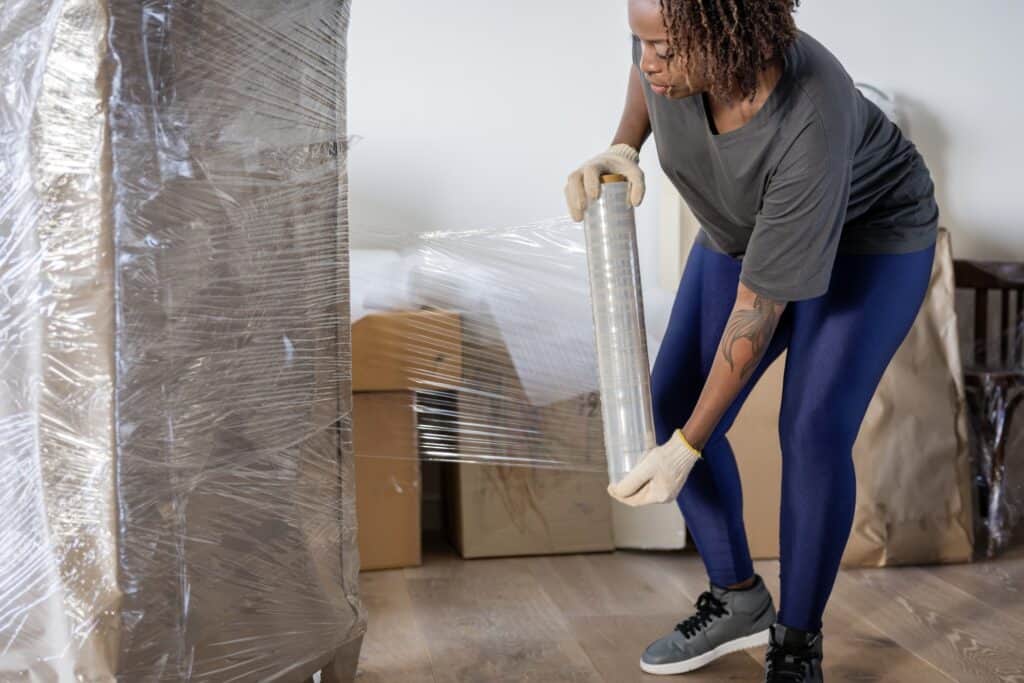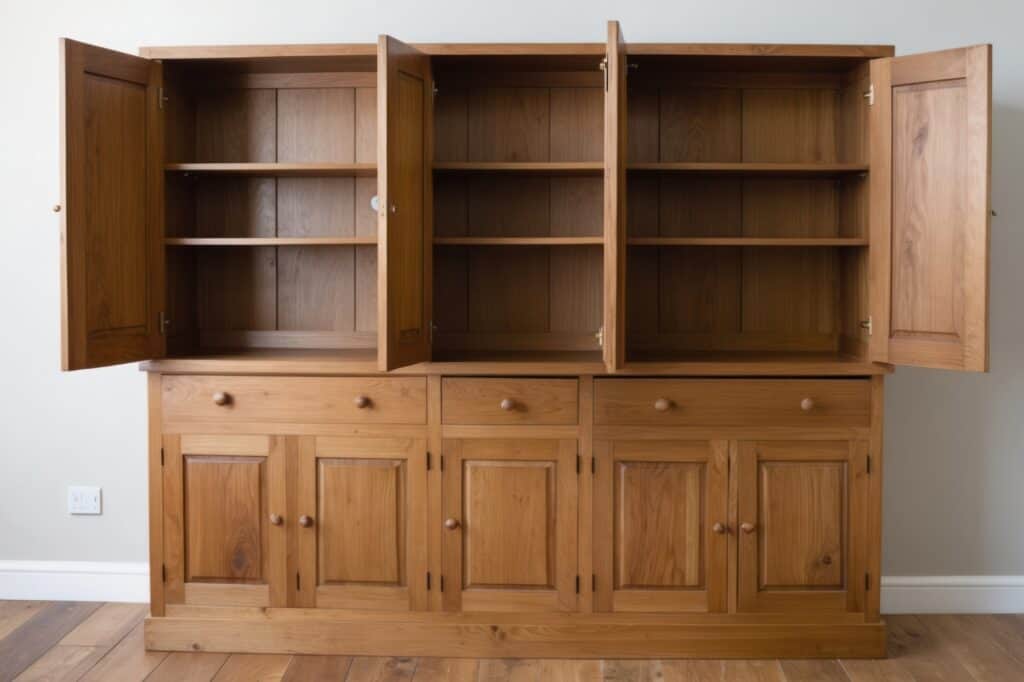Wondering how to move large furniture when moving house? This comprehensive guide provides you with practical steps and expert advice to make the moving process easier and more efficient. From planning and dismantling to protecting your treasured possessions, we’ve got you covered. Learn about the essential tools such as furniture dollies, sliders, and lifting straps, and discover proper techniques to ensure a stress-free move. Whether you’re moving to a new house or just rearranging, this guide is your go-to resource.
Key Takeaways
- Effective planning, including creating a detailed moving checklist and scheduling the move early, is vital for minimising stress during the relocation process.
- Preparing large furniture by disassembling, removing loose items, and using protective materials enhances safety and reduces the risk of damage during the move.
- Utilising appropriate tools such as dollies, sliders, and lifting straps, alongside practising proper lifting techniques, ensures a safer and more efficient moving experience.
Plan Your Move to Hounslow in Advance
Planning ahead is essential for a seamless moving experience. When moving house, especially to a bustling area like Hounslow, a well-thought-out plan minimises stress and ensures smooth execution during the house move. Effective planning minimises unnecessary moves and helps position furniture efficiently, reducing the need for repositioning.
Consider the risks, safety, and logistical aspects of your planning process. A well-structured plan guides every step of the moving process, from packing to unloading. Creating a moving checklist and developing a timeline are core steps for a smooth move. Preparation and the right tools are key for a seamless relocation.
Adhering to a planned timeline and checklist ensures an organized and efficient move. Ensure appropriate planning and safety considerations before moving any furniture. The following subsections cover creating a moving checklist, scheduling your move early, and arranging extra help.
Create a Moving Checklist
Creating a moving checklist is one of the most effective tips for moving. A checklist helps keep track of tasks and deadlines, ensuring no important tasks are overlooked. Regularly updating your checklist to adapt to changes will further streamline the process. A detailed checklist helps you stay organized and reduce stress on moving days.
Schedule Your Move Early
Scheduling your move early is crucial for the moving process. Booking your move in advance secures better rates and availability of professional movers, ensuring a smoother transition. When choosing your moving date, consider potential additional costs like parking permits, which may be necessary in busy areas like Hounslow.
Booking early allows you to choose the best date and avoid last-minute issues from rushed decisions. This foresight is beneficial for heavy furniture or large items, giving you ample time to prepare and organise.
Arrange Extra Help
Extra help is essential for the safe and effective movement of heavy furniture. Extra manpower helps prevent injuries and protects your possessions. Ask a friend to help lift heavy furniture, or hire professional movers if friends are unavailable. Another option is to hire additional help through professional services. Wardrobes and bookcases often require extra help due to their size and weight.
Having the necessary support on a moving day makes the process smoother and safer. With extra help, you can efficiently handle heavy furniture, minimising the risk of injury and damage to your treasured possessions.
Prepare Your Large Furniture

Preparing large furniture before the move minimises damage and simplifies transport. Moving large pressboard furniture can be risky as it may become unusable after the move. Sofas, being bulky and heavy, can pose challenges and potentially mark walls during the move. Efficient loading techniques reduce potential damage during transport.
For fridge freezers, run-down food supplies and defrost them in advance to avoid leaks or spills. Properly preparing large furniture protects your belongings and makes the moving process more manageable.
Disassemble Where Possible
Dismantling large items simplifies the moving process and ensures easy reassembly later. Disassembling large furniture reduces its size and risk of damage. An Allen key, screwdriver, and hammer are needed to dismantle a bed frame. Keep nuts, bolts, screws, and dowels together in a labelled sandwich bag when dismantling.
Disassemble large furniture if it doesn’t fit through doorways. Many removal companies offer dismantling/reassembly services for wardrobes, which is helpful if you’re not comfortable doing it yourself. Disassemble furniture for safer transport if it’s too large or heavy to move downstairs.
Remove Loose Items
Removing loose items from furniture prevents accidents and reduces weight during a move. Clearing contents from drawers and cabinets lightens the load and prevents accidents. This simple step ensures a smooth and safe moving process by minimising the risk of items falling out and causing damage. Additionally, it makes handling and transporting the furniture much easier and more efficient.
Protect Furniture
Proper precautions and protective materials prevent damage to wooden furniture during moving. Disassemble large pieces, remove loose items and wrap them in protective materials to ensure safety during transport. Tightly wrap wooden furniture in blankets, followed by bubble wrap or plastic wrap for maximum protection.
For couches, a combination of blankets and plastic wrap provides effective protection. Bubble wraps, blankets, and plastic film are ideal for protecting furniture during transport. Wrapping furniture in blankets and plastic wrap significantly reduces the risk of scratches and damage during transport.
Equip Yourself with the Right Tools
Having the right tools is crucial for a safe and efficient move. Proper tools significantly enhance safety and efficiency when moving large furniture. Assessing the weight and size of furniture helps determine the need for additional help or equipment.
Using dollies and straps significantly eases the process of loading heavy items into the truck. These tools not only help in lifting and manoeuvring bulky furniture but also ensure that the items are secured and stable during transport, reducing the risk of damage or injury.
Furniture Dollies
Furniture dollies facilitate the movement of heavy furniture, making the process safer. Ramps, sliders, and dollies help with moving heavy items. Heavy-duty furniture dollies can support up to 1,000 pounds, making them invaluable for moving large items with a furniture dolly.
Furniture Sliders
Furniture sliders minimise friction and protect floor surfaces during moving. Using furniture sliders beneath heavy items eases the moving process and protects floors from scratches. Make-shift sliders can be created from rugs, towels, carpet cut-offs, plastic container lids, or Frisbees.
Furniture sliders reduce friction for easier movement when moving heavy furniture. Avoid using tinfoil when moving furniture across hard flooring as it may scratch surfaces. Incorporating sliders into your moving plan makes the process smoother and safer.
Lifting Straps
Lifting straps distribute weight evenly and enhance control while carrying heavy furniture. Lifting straps redistribute weight to improve control and reduce the risk of injury. This tool significantly aids in handling bulky and heavy items.
Clear and Protect Pathways
Clearing and protecting pathways ensures a smooth and safe move. Remove any rugs or furniture pads from the moving path to minimise tripping risks. Moving blankets help safeguard both furniture and flooring during the move.
These precautions create a clear and safe path for moving large furniture. The following subsections discuss measuring furniture and doorways, clearing obstacles, and protecting walls and floors.
Measure Furniture and Doorways
Measuring ensures furniture fits through doorways and prevents damage during the move. Measure the dimensions of your furniture and the doorways it must pass through before moving. A tape measure is essential for accurate measurements on moving days.
If a sofa is too large for entry points, consider dismantling it to make it easier to move through doorways. Alternatively, you can temporarily remove a door frame or even a window to create enough space for the sofa to fit through.
A clear route is essential for a safer and more efficient move. Ensuring that pathways are free from obstacles allows for smoother navigation and reduces the risk of accidents during the moving process.
Protecting walls and floors prevents scratches and dents during the move. By using protective materials like cardboard and blankets, you can safeguard these surfaces effectively, ensuring that both your furniture and home remain in pristine condition throughout the moving process.

Use Proper Lifting Techniques
Proper lifting techniques prevent common injuries, particularly back injuries, during the moving process. Lift heavy items with your legs, keep your core tight, and hold the load close to your body to enhance stability and control.
Additional hands improve coordination and communication and reduce the risk of injury during the moving process. Wearing protective clothing, such as gloves, minimises injuries while moving heavy furniture.
Bend at the Knees
Proper lifting techniques avoid back injuries during the moving process. To lift heavy items safely, bend at the knees and keep your back straight. Bending the knees while lifting prevents stress on the back. This technique distributes weight properly and reduces back strain.
Keep the Load Close
Keeping the load close reduces back strain and increases control while moving furniture. Hugging the load close to the body provides better balance and stability. Holding heavy items near your body enhances stability and minimises the risk of losing balance.
Lift with Your Legs
Using leg muscles for lifting prevents undue pressure on the back. To lift heavier items safely, ensure your feet are stable and apart, with one leg in front of the other. By focusing on leg muscles, you can enhance your lifting technique and reduce the risk of injury. Always remember to lift with your legs rather than your back to ensure safety during the moving process.
Navigate Stairs and Tight Spaces
Navigating stairs and tight spaces is often one of the trickiest parts of moving large furniture. Before moving furniture, ensure exit pathways are clear of obstacles and not slippery for safer transport.
Using tools like ramps and dollies helps move heavy furniture without damaging floors and allows for better control. The key is to use the right techniques and communicate effectively with your team.
Use Ramps
Ramps are essential for safely guiding heavy furniture down staircases. They should be used to move furniture downstairs, facilitating a safe descent of heavy items. This tool can make a significant difference in preventing damage and ensuring a smooth move.
Tilt and Pivot
Tilt and pivot furniture to manoeuvre through tight areas. Continuously turn the furniture while moving it through the door frame using the hook technique. Tilting furniture alters its centre of gravity, making it easier to manoeuvre in tight spots. This technique is particularly useful for awkwardly sized furniture.
Work in Teams
Having a coordinated team reduces risks and enhances efficiency when moving bulky items. This method ensures that everyone is on the same page and can handle the heavy lifting more effectively.
Working in teams is one of the top tips for moving large furniture. It allows for better coordination and communication, ensuring that each person carrying a piece of furniture is aligned with the others, which reduces the risk of accidents and makes the process more efficient.
NOTE
Moving large furniture through staircases and tight spaces requires preparation and teamwork. Clearing paths, using tools like ramps and dollies, and coordinating with a team ensures a safer, smoother move while reducing the risk of damage to your items and home
Load and Unload the Moving Truck
Loading and unloading the moving truck efficiently is crucial for a smooth moving day. Start by loading heavy items first to create a stable base in the moving truck. Secure furniture using straps to prevent shifting during transit.
Lastly, have a plan for where each piece of furniture will go in the new house to streamline the unloading process. This foresight will not only save time but also reduce the stress of rearranging furniture later.
Load Heavy Items First
Loading heavier furniture first creates a solid foundation for the rest of the items. It’s crucial to place larger furniture pieces first to establish a stable base for the rest of the load. Positioning large and heavy items at the bottom of the truck ensures stability throughout the journey.
Secure Furniture
The purpose of securing furniture is to prevent shifting during transit. Using moving straps helps to keep items in place and stops them from shifting during transportation. Properly strapping down furniture is essential to avoid movement and damage while driving.
Plan the Unloading Process
An unloading plan is crucial for managing the placement of furniture in your new home. Planning the unloading process prevents chaos and streamlines furniture placement. An effective unloading plan should include designated spots for each piece of furniture in your new home.
Consider Hiring Professional Movers

Engaging professional movers can transform a stressful move into a more manageable experience. When moving feels overwhelming or physically challenging, it’s advisable to consider hiring professional movers. Professional movers ensure safe and efficient handling of furniture, which is particularly important for heavy items like pianos.
By hiring experts, you can avoid the risks associated with moving large or delicate items, leading to a smoother moving experience.
Cost Considerations
Understanding the full scope of costs, including hidden expenses, is vital for budgeting a move. This includes the cost of hiring professional movers, additional services like packing, and any potential extra charges.
Being aware of these costs ensures you can plan financially for a stress-free move. This foresight allows you to allocate resources effectively, avoiding unexpected expenses and ensuring a smooth transition to your new home.
Summary
Moving large furniture when moving house to Hounslow can be a challenging task, but with the right preparation, tools, and techniques, it can be done efficiently and safely. From planning your move in advance to using proper lifting techniques and considering professional movers, every step is crucial for a successful move. Remember to protect your furniture, clear pathways, and work in teams to ensure a smooth transition. With these, your moving day in Hounslow can be a stress-free and enjoyable experience. Happy moving!
Frequently Asked Questions
Why is it important to plan my move to Hounslow in advance?
Planning your move to Hounslow in advance is crucial as it minimises stress and ensures a smooth execution, allowing for efficient positioning of furniture without unnecessary handling.
What are the benefits of using furniture sliders?
Using furniture sliders significantly reduces friction, protects your floor surfaces, and simplifies the process of moving heavy items. Their application can greatly enhance your home organisation and maintenance efforts.
How can I protect my furniture during the move?
To effectively protect your furniture during the move, utilise protective materials such as blankets, bubble wrap, and plastic wrap to prevent any potential damage. This proactive approach ensures your belongings remain in excellent condition throughout the relocation process.
What should I do if my furniture doesn’t fit through the doorways?
If your furniture doesn’t fit through the doorways, measure it accurately and consider disassembling the furniture or removing a door frame to facilitate entry. This approach can help ensure your pieces reach their desired location without damage.
Why should I consider hiring professional movers?
Hiring professional movers ensures safe handling of heavy and delicate items, significantly reducing the risk of damage and facilitating a smoother moving process.






